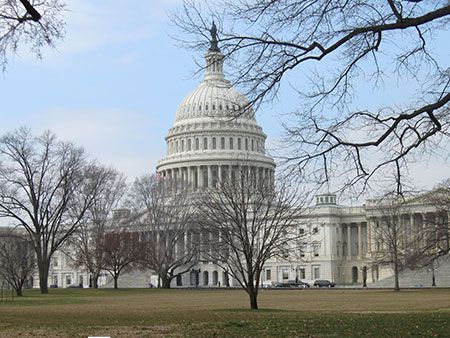October 25, 2021
U.S. Environmental Protection Agency
Office of Pesticide Programs
1200 Pennsylvania Ave. NW.
Washington, D.C. 20460-0001
RE: Docket ID Number EPA-HQ-OPP-2021-0575, National Level Threatened and Endangered Species Biological Evaluations for Clothianidin, Imidacloprid and Thiamethoxam
Dear Sir or Madam:
The American Farm Bureau Federation (AFBF) is pleased to submit these comments in connection with Environmental Protection Agency’s (EPA) docket related to its draft biological evaluation for Clothianidin, Imidacloprid and Thiamethoxam, neonicotinoids important to agricultural production. AFBF is the nation’s largest general farm organization, representing agricultural producers in all fifty states and Puerto Rico. Many of our growers utilize neonicotinoid pesticides in their farming operations. They would be negatively affected by any measure to restrict the use of this crop protection technology.
As AFBF stated in May 2020 comments on the proposed interim decision on several neonicotinoids, “Neonicotinoids are used on horticultural and ornamental plants as well as row crops with the largest use on corn, soybeans, wheat, cotton and sorghum. This class of pesticides is essential to growers because of their use in integrated pest management (IPM) programs. Neonicotinoids offer farmers selective control over pests to maintain the presence of beneficial insects while keeping potential pests away. The absence of neonicotinoids would force farmers to use older chemistries that do not offer the same selective benefits found in neonicotinoids. This would result in reduced yields, more frequent application, and reverse progress made with existing IPM and resistance management programs.
Neonicotinoids help farmers manage pest issues in which no other products are as efficient. For example, neonicotinoids have proven to be an effective tool in mitigating citrus greening caused by the invasive Asian Citrus Psyllid. Neonicotinoids are unique in their ability to interrupt the insect’s feeding, which reduces the possibility of citrus greening spread. This group of pesticides is also the only soil insecticide registered for use in soybeans and wheat.”
To add, the use of seeds treated with neonicotinoids has reduced non-target exposure and environmental runoff. These treated seeds have addressed insect threats in various crops, including corn, soybeans, potatoes, sugar beets, and vegetables. Considering the unique benefits of neonicotinoids to agricultural production, it is in the best interest of American food and fiber production to maintain product availability for a multitude of crops and without compromising product efficacy.
AFBF understands that EPA continues to discern potential mitigations and limitations on uses for neonicotinoids. Alternative products with equal or better efficacy would need to be available to producers. However, the alternatives suggested by EPA, pyrethroids and organophosphates, are also under review and subject to potential new limitations on their uses.
AFBF worries that the methodology used to conduct the biological evaluation for Clothianidin, Imidacloprid and Thiamethoxam may lead to limitations on registered uses and compromise the availability of these products. AFBF is disappointed that the Environmental Protection Agency failed to use the most accurate data in the draft biological evaluation. AFBF asserts that the manner in which EPA calculated the impacts on species does not account for the judicious use of pesticides. Instead, EPA’s standard assessment methods rely on maximum use patterns allowed on product labels, overstating the quantities used and therefore overestimating the impact on species. In EPA’s draft biological evaluation for imidacloprid, EPA made LAA determinations for 1,445 species of 1,821 the agency reviewed, or 79.3%. For thiamethoxam, the number of LAA determinations was 1,396, or about 77%. EPA found that clothianidin would affect 1,225 species or about 67%. EPA’s process overestimates use assumptions and species impacts. This process effectively delegates EPA’s responsibility to make an accurate and realistic assessment to other agencies (the U.S. Fish and Wildlife Service and the National Marine Fisheries Service). This transfer in responsibility has the potential for EPA’s inaccurate findings to proliferate throughout the course of the evaluation. This approach does little to advance a tailored response, should one be needed, that would afford species protection and enable the continued use of neonicotinoids in as many crops as possible.
As EPA continues to review the impact of neonicotinoids on species and habitats, AFBF urges EPA to encompass in its decision making the benefits of neonicotinoids and how they enable farmers to produce more food, fuel and fiber while being stewards of the land. EPA should also utilize data and usage patterns reflective of actual product use instead of assumed product use. AFBF urges the EPA to ensure any potential mitigations or limits on these products as a result of this biological evaluation is rooted in the best available science and data. AFBF values the continued availability of neonicotinoids and appreciates the opportunity to provide comments to EPA on its draft biological evaluation.
Sincerely,
Sam Kieffer
Vice President, Public Affairs

